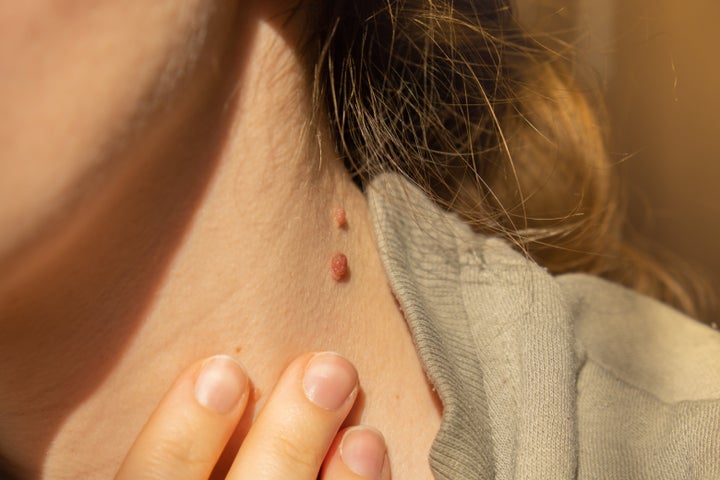
Moles might be a bit of nuisance, but it’s really not a good idea to pick at them – and that’s according to the experts.
After all, a mole is just a small group of cells with pigment which can pop up anywhere on the skin.
Regardless of how you feel about them, they’re usually pretty harmless.
According to New York-based clinic, Walk-In Dermatology, most adults have between 10 and 40 moles on their skin, and tend to get more as they get older.
There are all kinds of moles out there – big, small, flat or raised – and sometimes, it’s hard to avoid damaging them just in day-to-day life.
Of course, some people will deliberately scratch or pick at them (please, don’t), but it is also possible to hurt them on clothing, jewellery, or anything which catches on it and pulling on them, leading to bleeding.
Even scratching an itchy mole might trigger bleeding.
So New York-based clinic, Walk-In Dermatology, explained that in most cases, if this happens, it might be painful but it should be treatable.
Its website reads: “Scratching off a mole will probably cause some bleeding, but should not require medical treatment.”
It is also so important not to try to remove a mole yourself – but not because of the common misconception that it will give you skin cancer.
Shaving or cutting the growth can disfigure your skin, and leave a scar, while removing a mole without sterile equipment in a nonsurgical condition could trigger infection.
If the mole is already cancerous and you try to pick it off, the cells can stay in the skin and spread.
But, as Walk-In Dermatology explains, just scratching a mole cannot trigger skin cancer.
Skin cancer does not always start off in moles. As the Skin Cancer Foundation notes, only 20-30% of melanomas (a rare form of skin cancer) start in the existing moles.
The website also explains that your mole isn’t actually bleeding but the surrounding skin underneath which is injured. There’s also a chance the skin vessels beneath it might have been weakened when the mole was damaged.
But, it’s usually easy to treat at home.
You can put a cotton ball on it with rubbing alcohol to sterilise the affected area, put pressure on it to stop the bleeding and cover it with a bandage (but make sure the adhesive doesn’t touch the skin).
“You don’t need to be too concerned about moles that are bleeding or oozing fluids due to injury,” Walk-In Dermatology explains, before adding: “You should visit a dermatologist if it seems to be bleeding for no reason.”
This could be a sign of melanoma and your doctor may suggest a biopsy and remove any suspicious growths.
As the NHS points out, you mainly need to watch out for moles which change size, shape or colour.
So basically – it’s always worth keeping an eye on your moles, but it’s best never to interfere with them yourself...